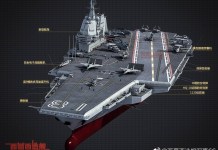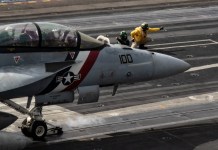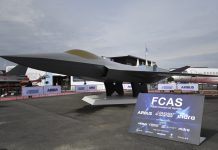Today, the US Air Force is revered for possessing the world’s most advanced and powerful fighter jets. However, in the 1950s, it also managed to create a disastrous aircraft that was loaded with so many issues that the program was shelved just after building two of them.
One such issue was the noise generated from this aircraft that earned it the name “Thunder screech”.
In the 1950s, when the era of jet engines had already taken over, the Air Force’s Propeller Laboratory at Wright-Patterson Air Force Base tried to experiment with combining the two propulsion techniques namely: propeller- and jet-powered. It was manufactured by Republic Aviation.
It initially started as a combined program by the Air Force and the Navy. The aim of the program was to find the balance between the top speed performance of a jet engine with the instant on and off power control that propeller planes provided.
The inception of the idea was to create a supersonic propeller that was faster than the speed of sound and could be used to fly a propeller plane as fast as a jet.
This was carried out by modifying the F-84 Thunderjet and installing a T-40 turboprop engine system in it. The T-40 was basically made by combining two T-38 engines into one engine system in order to push the propellers at 2,100 RPM, making it supersonic.
According to Popular Mechanics, this created a constant sonic boom in front of the aircraft that earned the plane the name “Thunderscreech.” “The airplane was so loud it could be heard while warming up on the ground (a procedure that took half an hour) up to 22 miles away.”
Reportedly, the engineers at the Allison Engine Company that created the engine stated that the engine was a “monstrosity” and a “mechanical nightmare”.
Top Indian Politician Writes Obituary of India-Russia Friendship; Advocates For Joining The US Camp
Analysts have claimed that the T-40 engine was the world’s most powerful aircraft engine that was built with 5850 horsepower. It caused a massive amount of vibration in the aircraft that the pilots were given permission to eject from the plane if they felt something was going wrong.
The XF-84H “Thunder screech” was a single-seat aircraft with a mid-wing along with an all-metal hull and swept wing. The chassis, cockpit, a number of units, including the wing with all the mechanization were completely identical to that of the F-84F aircraft.
The engine was installed behind the cockpit and the gearbox was in the forward fuselage. The tail was redesigned making it a T-shaped design. The keel was modified and the fuselage was made longer.
It took its first flight in 1955 and about a year later the program was officially closed owing to several safety issues. During the test flights, serious propeller issues were identified, which lead to failures and accidents.
Another big issue faced by the crew and ground staff was the unbearable noise emitted from the aircraft. The speed of rotation of the propeller blades was supersonic, which caused the formation of a sonic boom that could be heard 22 miles away even before it took the flight.
The ground staff complained of dizziness and nausea. In one case, it even induced a seizure in the crew chief of nearby C-47 cargo transport. Owing to this, the program was finally canceled and was never returned.
Site-Seeing By Air: Thai Airways Follows Australian Qantas To Launch A ‘Flight To Nowhere’
Peter Suciu of the National Interest revealed that only two civilian test pilots ever flew the aircraft and after just one flight one of those two vowed never to get in its cockpit again. He added that the XF-84H was the only US Air Force prototype not actually flown by an Air Force pilot.
One of the two aircraft is now a part of the collection of the National Museum of the United States Air Force and is in the Research and Development Gallery.




